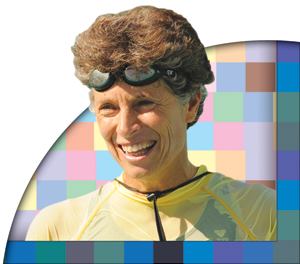When Melon Dash realized that probably half of the 20 adults she was teaching to swim were more concerned about just staying alive in the water than whether they were moving their arms qand legs correctly, she knew there had to be a better way.
That was in 1978, when Dash was a water safety instructor at Keene State College in New Hampshire. Since then, she has started the Miracle Swimming Institute in Sarasota, Fla., and introduced a somewhat revolutionary adult learn-to-swim approach that could someday become the basis for all swim lessons.
The method of Dash’s MSI takes a step back from the traditional instruction programs and focuses on the more emotional aspects of learning, addressing fears and helping individuals to become comfortable in the water. The method hasn’t yet been adopted by any major learn-to-swim agencies, including the YMCA of the USA and the American Red Cross. But Dash estimates she’s worked with approximately 4,000 students since starting her business in 1983 and notes that all of them say it changed their lives. Now there are nearly 30 other MSI instructors and, Dash says, time and money may prohibit some clients from becoming full-fledged swimmers, but all students overcome a tremendous amount of fear.
The program is based on what she calls The 5 Circles Teaching Method. This learning paradigm taps into the spiritual and emotional aspects of a person’s makeup. Instructors focus on helping students maintain a level of emotional comfort as they embark on learning.
To develop a better picture of how fear and anxiety factor into adults’ ability to learn to swim, in 1998 MSI commissioned a Gallup poll to survey nearly 1,000 American adults. The results support Dash’s theory that adults who can’t swim are blocked by emotions. Gallup found that 46 percent of American adults are afraid in deep water in pools, 64 percent are afraid in deep open water, and 39 percent are afraid to put their heads underwater.
“Nobody has ever done a poll like that,” Dash says. “It’s the only statistics we have [of that kind].”
In the end, the former competitive swimmer says, “Most of our current swimming lessons only serve 50 percent of the population [those not afraid in water].” For that reason, Dash plans to keep spreading her message and sharing the success of her program. “It really is time for a 21st century method. For 27 years, I’ve been trying to shake people and say, ‘You want this.’”



